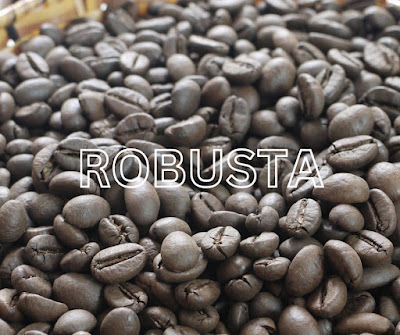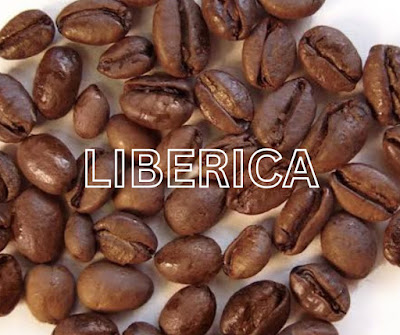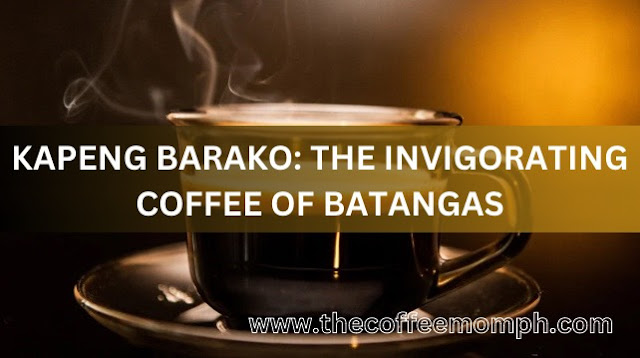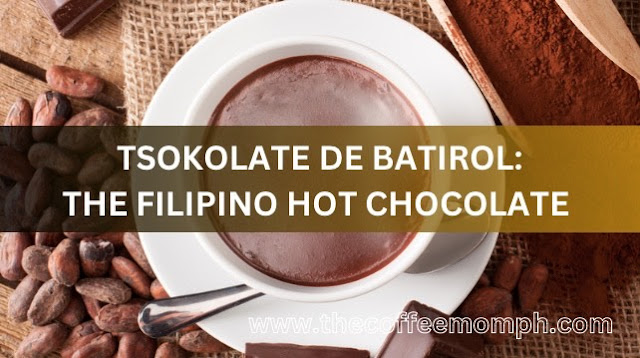What are the Different Coffee Beans in the Philippines?
The Philippines, renowned for its lush landscapes and rich agricultural heritage, is a tropical paradise. While not a dominant force in global coffee production, the country has a unique niche with distinct coffee varieties.
From the hearty Liberica to the refined Arabica, the Philippines offers a captivating assortment of coffee beans. Let’s delve deep into Philippine coffee and explore its diverse coffee bean varieties.
Arabica Coffee Beans
Arabica coffee, known scientifically as Coffea arabica, is one of the most renowned coffee species in the world. A favorite among connoisseurs, its rich history and intricate flavor profile make it a staple in coffee shops and households.Origins of Arabica Coffee Beans
The story of Arabica begins in the highlands of Ethiopia. According to popular lore, a goat herder named Kaldi discovered the beans in the 9th century. Upon observing the energetic behavior of his goats after they consumed the cherries from a particular plant, he tried it himself.Soon, the knowledge of this energizing bean spread, making its way through Yemen and the Arab world and later to other parts of the globe.
Flavor Profile of Arabica Coffee Beans
Arabica beans are often lauded for their distinct flavor, which differs significantly from other coffee species, like Robusta. Some general characteristics of Arabica beans are:Complexity
Arabica beans have a wide flavor range, from more acidic and brighter tastes to deep, sugary ones.Acidity
This doesn't refer to the pH level but to a bright, vibrant, sparkly, or crisp quality. A good Arabica bean can often have a flavor profile that is both lively and makes the coffee more multifaceted.Sweetness
A great Arabica coffee should hit the perfect balance between sweetness and acidity. This balance ensures that the coffee is neither too sharp nor flat.Body
This pertains to the weight or thickness of the coffee on your palate. Arabica coffees often have a lighter body compared to Robusta.Notes and Undertones
Depending on where it's grown, Arabica coffee can have many aromatic notes, including but not limited to floral, fruity, nutty, or chocolatey.Growing Climate and Conditions of Arabica Beans
Arabica coffee plants are picky regarding their environment, but with the proper care, they flourish, producing top-quality beans.Altitude
Arabica plants prefer high altitudes, often between 800 and 2,200 meters above sea level. The cooler climate at these elevations allows the beans to mature slowly, intensifying their flavor.Temperature
A consistent temperature between 15 to 24°C (59 to 75°F) is ideal. Arabica plants are sensitive and can be damaged by temperatures below freezing or above 30°C (86°F).Rainfall
Arabica coffee plants require between 1,200 to 2,200 mm of rainfall a year, distributed throughout the year.Soil
Well-draining soil is crucial. Arabica trees thrive in volcanic soils, which are rich in minerals.Arabica Coffee in the Philippines
With its rich agricultural history and perfect climatic conditions, the Philippines is no stranger to Arabica coffee. The Cordillera region in Northern Luzon, known for its high elevation, cool climate, and fertile soil, produces exceptional Arabica coffee beans.Local farmers and cooperatives have worked tirelessly to produce Arabica beans that can stand shoulder-to-shoulder with global varieties.
Philippine Arabica coffee, often organic and grown in small batches, boasts flavors reflecting the archipelago's unique terroir. Notes of citrus, chocolate, and even hints of tropical fruit can be discerned from locally grown beans.
Robusta Coffee Beans
Second only to Arabica in global production, Robusta coffee, or Coffea canephora, brings a different yet equally rich coffee experience to the table. Often considered the bolder and more robust cousin of Arabica, Robusta plays a significant role in the coffee industry and the cups of many coffee lovers.Origins of Robusta Coffee Beans
Robusta coffee traces its roots back to the western and central sub-Saharan Africa. Specifically, countries like Uganda, Liberia, and the Democratic Republic of Congo are considered its native habitats.Unlike Arabica's legendary Ethiopian origin, Robusta's discovery is less storied but equally significant. Its strength and resilience have since facilitated its spread to various parts of the world, especially Southeast Asia.
Flavor Profile of Robusta Beans
Robusta beans have a characteristic profile that starkly contrasts with Arabica:Intensity
Robusta coffee is notably strong, both in terms of caffeine content and flavor. It has nearly double the caffeine of Arabica.Bitterness
The heightened caffeine level in Robusta beans gives them a more bitter and astringent taste, which can be an acquired preference for some.Less Acidity
Robusta has a lower acidity than Arabica, which can result in a smoother drink for those sensitive to acidic foods.Body
Robusta generally has a fuller body, giving it a heavier or syrupy feel on the palate.Notes and Undertones
Flavor notes for Robusta often lean towards woody, earthy, and sometimes even rubbery or smoky. This makes it a popular choice for espresso blends and instant coffees.Growing Climate and Conditions of Robusta Beans
Robusta coffee is aptly named for its robustness and ability to thrive where Arabica cannot.Altitude
Robusta is versatile in terms of altitude. It can grow from sea level up to 800 meters, most thriving in lower altitudes.Temperature
Robusta plants prefer warmer temperatures, typically between 24 to 30°C (75 to 86°F).Rainfall
Like Arabica, Robusta needs about 2,200 to 3,000 mm of rain annually, well-distributed throughout the year.Soil
Robusta is less picky about soil than Arabica but does best in deep, well-draining soils.Robusta Coffee in the Philippines
The Philippines has historically been a major Robusta producer. While Arabica thrives in the Cordilleras, Robusta is more suited to lowland areas, particularly Mindanao and the Visayas. Around 90% of the Philippines' coffee production is Robusta.Given the Filipino penchant for strong, sweet coffee, locally-grown Robusta is often the bean for the traditional 'Kapeng Barako'—a beloved, bold coffee brew.
Filipino farmers have cultivated a rich tradition around Robusta, and its prominence in the local market is a testament to its adaptability and favorable growing conditions.
Excelsa Coffee Beans
While Arabica and Robusta might dominate the global coffee conversation, there are lesser-known species that bring unique flavors and experiences to the coffee world. Among them is the intriguing Excelsa.Part of the Coffea genus, Excelsa coffee offers a distinctive taste and aroma that's gaining attention among coffee enthusiasts.
Origins of Excelsa Coffee Beans
Excelsa coffee primarily originates from some areas of Africa, particularly around the Lake Chad basin in countries like Chad, Cameroon, and the Democratic Republic of Congo.Though it's a minor player in the global coffee market, it has a rich history in its native regions and is slowly gaining international recognition.
Flavor Profile of Excelsa Coffee
Excelsa boasts a profile that sets it apart from both Arabica and Robusta:Complexity
Excelsa beans contribute a complex tart, fruity profile and can often be likened to a light roast in flavor depth.Brightness
Excelsa's acidity is quite pronounced, lending brightness to its flavor like some Arabica beans.Fruitiness
One of the standout characteristics of Excelsa is its fruity undertones, with some even noting a spicy twist.Body
Excelsa often presents a medium body, making it less dense than Robusta but not as light as some Arabica beans.Notes and Undertones
Excelsa is celebrated for its varied notes, ranging from fruity and tart to spicy and woody.Growing Climate and Conditions of Excelsa Beans
Excelsa shares some similarities with Arabica and Robusta in terms of growing conditions but has its unique preferences:Altitude
Excelsa coffee plants typically grow at medium altitudes - often from 500 to 1,000 meters above sea level.Temperature
A consistent temperature between 18 to 26°C (64 to 78°F) is ideal for Excelsa growth.Rainfall
Excelsa requires about 1,500 to 2,500 mm of rain annually, similar to Arabica and Robusta, spread throughout the year.Soil
Rich, loamy, and well-draining soils are preferred for the Excelsa coffee plant.Excelsa Coffee in the Philippines
Though the Philippines is primarily known for its Arabica and Robusta crops, there's a budding interest in cultivating Excelsa beans. Some local farmers, recognizing the potential of this lesser-known species, have started integrating Excelsa into their farms, particularly in regions of Luzon.The unique flavor profile of Excelsa beans aligns well with the Filipino palate that appreciates varied aromatic undertones in coffee. As local coffee enthusiasts become more experimental, the demand and appreciation for Excelsa are expected to grow.
Liberica Coffee Beans
While Arabica, Robusta, and even Excelsa may ring familiar to many coffee enthusiasts, another intriguing variety waits in the wings: Liberica.
This unique bean, belonging to the Coffea family, is a rarity in the global market but offers a singular and memorable taste profile.
This unique bean, belonging to the Coffea family, is a rarity in the global market but offers a singular and memorable taste profile.
Origins of Liberica Coffee Beans
Liberica coffee proudly traces its roots to West Africa, particularly Liberia—hence its name. Unlike the more commercial varieties, Liberica has journeyed from its African origins to a few select regions worldwide, maintaining its exclusivity.Flavor Profile of Liberica Coffee Beans
Liberica coffee's flavor is distinct from other coffee species, presenting:Boldness
A strong, pronounced taste that can easily be differentiated from Arabica or Robusta.Smokey
Many Liberica beans come with a natural smokey flavor, reminiscent of dark roasted beans without the bitterness.Full-bodied
Liberica coffees offer a full-bodied experience, often described as dense or syrupy.Fruity and Floral
These beans often carry undertones of fruits and flowers, giving them a rounded, complex profile.Woody Notes
A characteristic trait of Liberica beans is their woody or sometimes rubbery undertones.Growing Climate and Conditions of Liberica Beans
Liberica beans, like their flavor, have a unique set of cultivation preferences:Altitude
These plants prefer low to medium altitudes, though they can grow at varying elevations.Temperature
Liberica thrives in temperatures ranging from 20 to 30°C (68 to 86°F).Rainfall
An annual rainfall between 1,700 to 2,300 mm, distributed throughout the year, suits Liberica growth.Soil
Liberica, being a hardy plant, can adapt to various soil types but prefers deep, loamy soils for optimum growth.Liberica Coffee in the Philippines
The Philippines holds a special place in the Liberica coffee narrative. Famously known in the region as 'Kapeng Barako', Liberica has found a loving home in the provinces of Batangas and Cavite. This coffee has become an integral part of local culture and morning rituals.In the Philippines, Liberica beans, with their strong, distinct flavor, have become synonymous with a powerful coffee kick, often sweetened with generous amounts of sugar to balance the boldness. Its cultural significance in Filipino coffee traditions can't be understated, with many locals swearing by their morning cup of Barako over other varieties.
Conclusion
The Philippines is a treasure trove of diverse coffee beans with unique characteristics and flavors. From the delicate and nuanced profiles of Arabica beans to the bold and robust Robusta flavors and Liberica and Excelsa's distinctiveness, the coffee beans of the Philippines offer a rich tapestry of taste experiences.The country's favorable climate, fertile soils, and dedicated farmers contribute to cultivating high-quality coffee beans that have gained recognition locally and internationally.
Whether you prefer the floral and fruity notes of Arabica, the strength, and versatility of Robusta, the enigmatic flavors of Liberica, or the intriguing taste of Excelsa, the coffee beans of the Philippines cater to a wide range of preferences, ensuring that every sip is a delightful journey of discovery. So, embrace the diversity and indulge in these different coffee beans' exquisite flavors.







